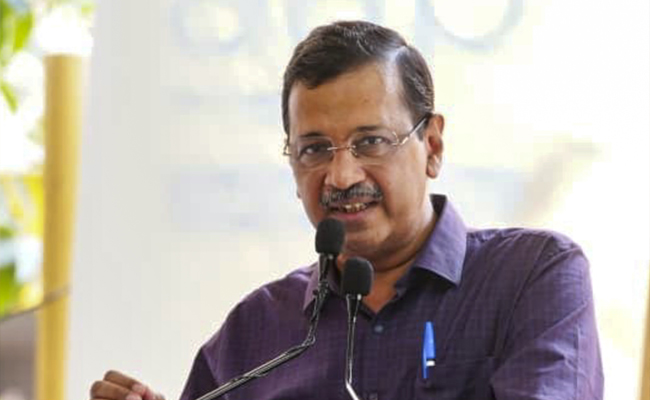The meteoritic rise of cryptocurrencies from seemingly nowhere has confounded lawmakers and bankers, and polarised opinions. Some have heralded them as the future of currency, while others have dismissed as an elaborate e-Ponzi scheme. Cryptocurrencies or cryptocoins are neither new nor few.
To put it Simply, cryptocurrencies are digital assets similar to any currency held in e-wallets. But unlike them, cryptocurrencies are not issued or controlled by any bank or corporation. Their value is derived from the belief that others users will also value them.
The first attempt at creating a cryptocurrency goes back to the early 1980s with 'ecash', but it was in the 1990s that researchers began to make key advancements which led to the launch of 'b-money' and 'bit gold.' Then in late 2008, the bitcoin.org domain was registered, and a paper titled 'Bitcoin: A Peer-to-Peer Electronic Cash System.' was published by the pseudonymous 'Satoshi Nakamoto.' Then in January 2009, Nakamoto published Bitcoin's open source software, and the bitcoin network came into existence.
Nakamoto became the first to solve the problem of double-spending in digital currencies. Another thing that made bitcoin unique was the fact that it was the first truly decentralized digital currency, where the transaction took place directly between the users using the 'peer to peer' model with no centralised intermediary.
Bitcoin used the 'trustless verification' model to secure these transactions. The 'trustless verification' model does not mean that there is no trust among the users of the system, but that the trust is distributed or decentralised.
In a normal face-to-face cash transaction, one person gives money to another person and they mutually verify on the spot that the amount is correct and that the currency is valid. However, if the two persons are not able to meet face-to-face, then they have to employ a third party that is 'trusted' by both; such as a bank, e-wallet, remittance agency, etc. In such cases, the trust resides completely with the third party.
Cryptocurrencies use the blockchain technology as the 'trusted' third party to facilitate two individuals to carry out a peer-to-peer transaction, to authenticate the sender's identity, and to validate the transaction using a transparent and decentralised infrastructure.
The Bitcoin model is the foundation on which other cryptocurrencies have been built.
How does it work?
In the bitcoin model, a transaction consists of an input (receipt) or an output (payment). A group of these transactions generated by different users is recorded in a public ledger known as a 'Block'. For a transaction to be valid, one cannot spend more than what one has, and each transaction must have an encrypted digital signature attached to it. This encrypted digital signature is generated by the system and ensures the authenticity of the sender and also prevents any alterations being made to the transaction once it is issued.
Since the Blockchain technology has no centralised system, the Blocks are maintained transparently on a decentralised global network of computers, all of whom share the same information regarding the transactions and therefore all share the same 'truth' at the same time.
This network uses what is known as the 'Machine Consensus' protocol to incentivise all the machines to come to a 'consensus' on the activities occurring within the network. The machines performing these tasks are known as miners.
Bitcoin, for example, uses a 'Machine Consensus' protocol known as 'Proof of Work,' which gives financial incentives to the miners to compete with one another to find new Bitcoin transactions, validate them, and add them to a Block. They then have to solve a complex mathematical problem to prove that they did the work of putting together the block of transactions. The Solution to this complex mathematical problem is what is known as a 'Hash' of the Block and is attached to the block as a seal and acts as a second layer of encrypted authentication on top of the transaction signature mentioned earlier.
Once a Block is complete with its list of transactions and its Hash, it gets attached to the end of an existing chain of Blocks based on a sequence determined by the Block's Hash. A chain of these Blocks is called a Blockchain. Once a new Block gets attached to the Blockchain and broadcast, everyone on the network update and synchronises to the new information. The longer a Blockchain gets, the more secure and incorruptible it becomes.
The system rewards the miners for the work done in two ways. First, every time a miner successfully completes a new Block, the system rewards the miner with cryptocurrency. Second, the miners are also given the transaction fees collected from the payers every time a transaction occurs.
Mining is required because the system periodically changes the key number attached to each hash, thus requiring fresh decryption every time the key changes. In the bitcoin system, it takes an average of 10 minutes for a new Block to be found by a miner. As more and more miners join, it gets that much harder for a miner to find a new Block. The average time to find a new Block varies between cryptocurrencies. For example: Litecoin is 2.5 minutes, Ethereum is 15 Seconds and Ripple 3.5 seconds. The faster a new Block can be found and added to the Blockchain, the faster a transaction can be verified.
The encrypted transaction signature and the hash sequence means that any alteration to a transaction, or to the Block sequence in a Blockchain, once it is published is practically impossible to alter. Therefore, the longer a Blockchain, the more trustworthy the transaction becomes.
Nakamoto mined the first 'Genesis Block' on the Bitcoin system, and was the first to make a Bitcoin payment. There are now well over 12,000 cryptocurrencies and the number is growing. About 25 of them have a market capitalisation exceeding $ 1 billion, and the top ten have a combined capitalisation exceeding $ 300 billion (2018 Q1). Cryptocurrencies are not all clones of one another; they have differences in their protocols, their algorithms, and their levels of centralisation.
To invest, or not to invest in cryptocurrency?
In reality, cryptocurrencies are just a series of ones and zeros within a computer network. Their real value as a medium of exchange will depend on three key determinants: their real-world usability or acceptance, their convertibility which will depend on their recognition by established financial institutions, and on them remaining legal. These are three simple yardsticks one should consider if investing in cryptocurrencies.
Let the Truth be known. If you read VB and like VB, please be a VB Supporter and Help us deliver the Truth to one and all.
Panaji (PTI): As part of a crackdown against tourist establishments violating laws and safety norms in the aftermath of the Arpora fire tragedy, Goa authorities on Saturday sealed a renowned club at Vagator and revoked the fire department NOC of another club.
Cafe CO2 Goa, located on a cliff overlooking the Arabian Sea at Vagator beach in North Goa, was sealed. The move came two days after Goya Club, also in Vagator, was shut down for alleged violations of rules.
Elsewhere, campaigning for local body polls, AAP leader Arvind Kejriwal said the fire incident at Birch by Romeo Lane nightclub at Arpora, which claimed 25 lives on December 6, happened because the BJP government in the state was corrupt.
An inspection of Cafe CO2 Goa by a state government-appointed team revealed that the establishment, with a seating capacity of 250, did not possess a no-objection certificate (NOC) of the Fire and Emergency Services Department. The club, which sits atop Ozrant Cliff, also did not have structural stability, the team found.
The Fire and Emergency Services on Saturday also revoked the NOC issued to Diaz Pool Club and Bar at Anjuna as the fire extinguishers installed in the establishment were found to be inadequate, said divisional fire officer Shripad Gawas.
A notice was issued to Nitin Wadhwa, the partner of the club, he said in the order.
Campaigning at Chimbel village near Panaji in support of his party's Zilla Panchayat election candidate, Aam Aadmi Party leader Kejriwal said the nightclub fire at Arpora happened because of the "corruption of the Pramod Sawant-led state government."
"Why this fire incident happened? I read in the newspapers that the nightclub had no occupancy certificate, no building licence, no excise licence, no construction licence or trade licence. The entire club was illegal but still it was going on," he said.
"How could it go on? Couldn't Pramod Sawant or anyone else see it? I was told that hafta (bribe) was being paid," the former Delhi chief minister said.
A person can not work without bribing officials in the coastal state, Kejriwal said, alleging that officers, MLAs and even ministers are accepting bribes.





